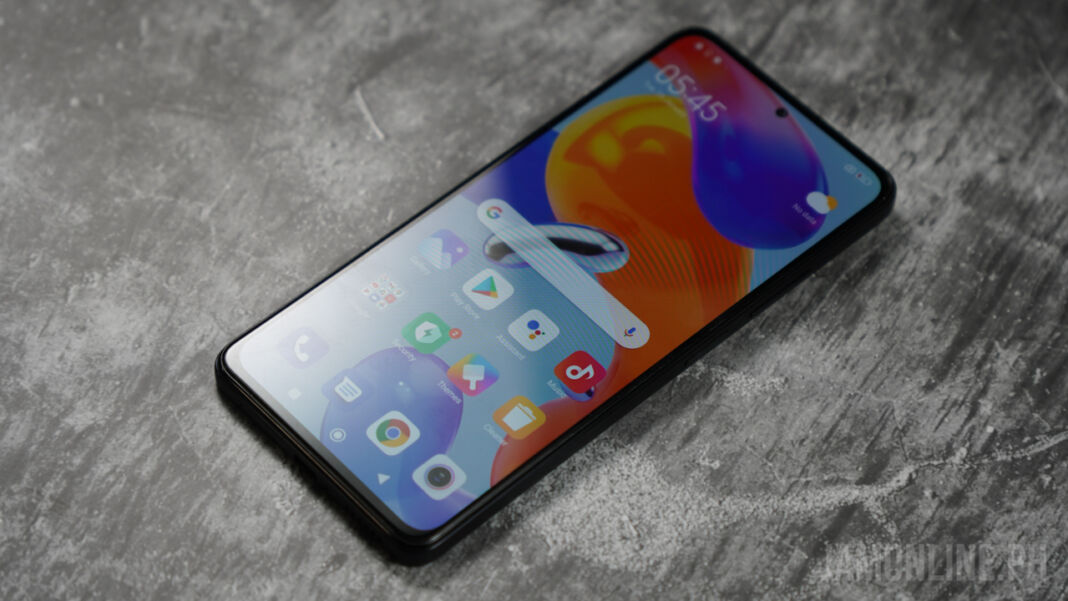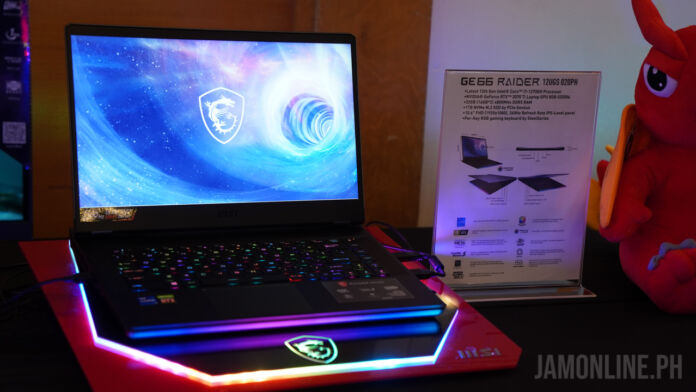Together with the Redmi Note 11 Pro, Xiaomi also dropped the Redmi Note 11S in the local market. The device packed slightly toned-down specs compared to the Pro model, making it more budget-friendly. Nevertheless, Xiaomi managed to retain some of the flagship-like features it can offer without compromising its price.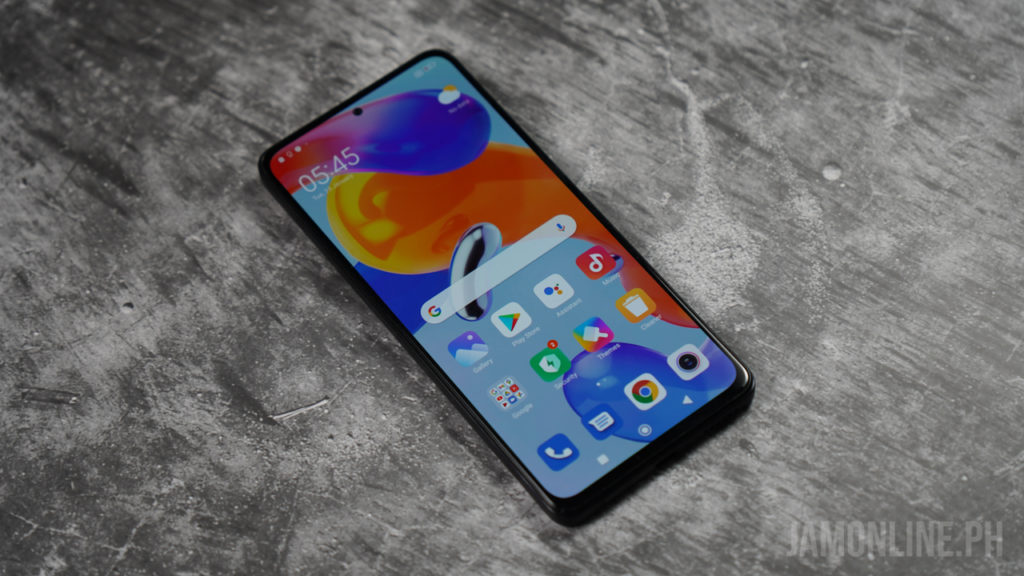
So, will the Redmi Note 11S be your next smartphone? Continue to read for our full review.
Redmi Note 11S Key Specs
- MIUI 13 based on Android 11
- 6.43-inch FHD+ AMOLED DotDisplay, up to 90Hz refresh rate
- Corning Gorilla Glass 3
- 2.05GHz MediaTek Helio G96 octa-core processor, ARM Mali-G57 MC2
- LiquidCool Technology
- 6GB/8GB LPDDR4X RAM
- 64GB/128GB UFS 2.2 storage, expandable up to 1TB
- Primary camera: 108MP main + 8MP ultra-wide + 2MP macro + 2MP depth
- Selfie: 16MP front camera
- 4G LTE
- WiFi 802.11 a/b/g/n/ac
- Bluetooth 5.0
- NFC
- IR Blaster
- 5,000mAh battery with 33W Pro Fast Charging
- Security: Side-mounted fingerprint, AI Face Unlock
- Dual speakers
- 3.5mm headphone jack
- USB-C
- IP53 Splash-proof tested
- Colors: Graphite Gray, Twilight Blue, Pearl White
Redmi Note 11S Review: Design
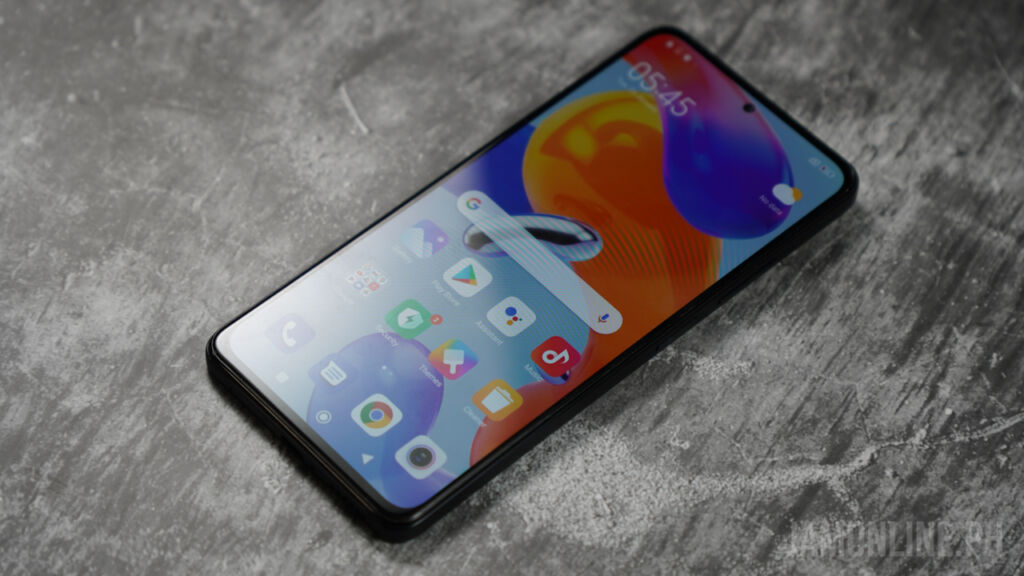
When placed side by side with the Redmi Note 11 Pro, anyone can have a hard time determining which is which at first glimpse. This is understandable, though, as the Redmi Note 11S comes with an almost identical appearance.
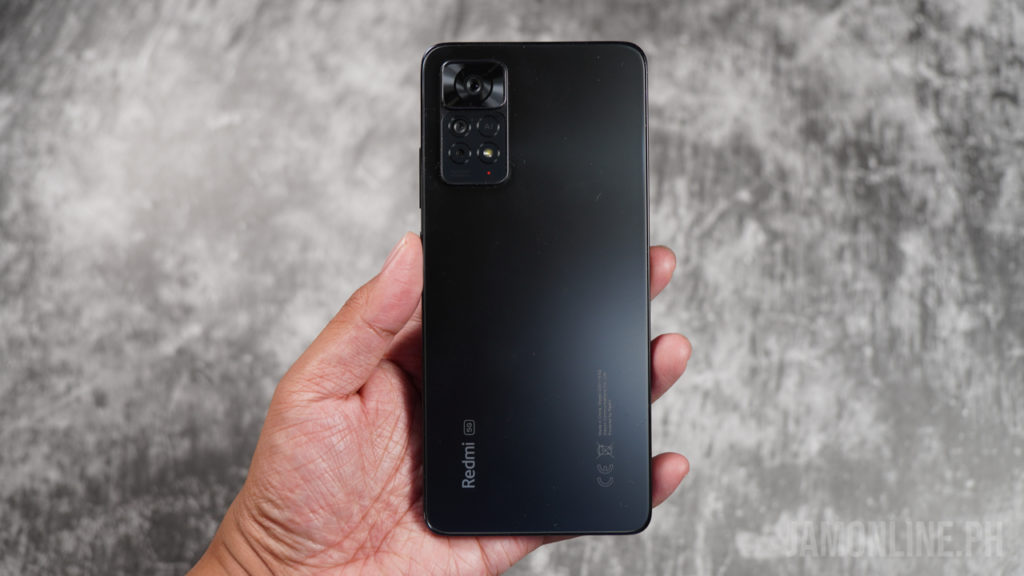
It shows off a metallic frame and a frosted back finish, allowing the device to look stunning and premium.

But, one of the most defining factors of the Redmi Note 11S is its edge. It also didn’t feel awkward when using the device with just one hand—something that we couldn’t do with the Pro model.
Upfront, you’d see its 6.43-inch screen with a punch-hole display, housing its 16MP selfie snapper. Placed above the sensor is the speaker for calls.
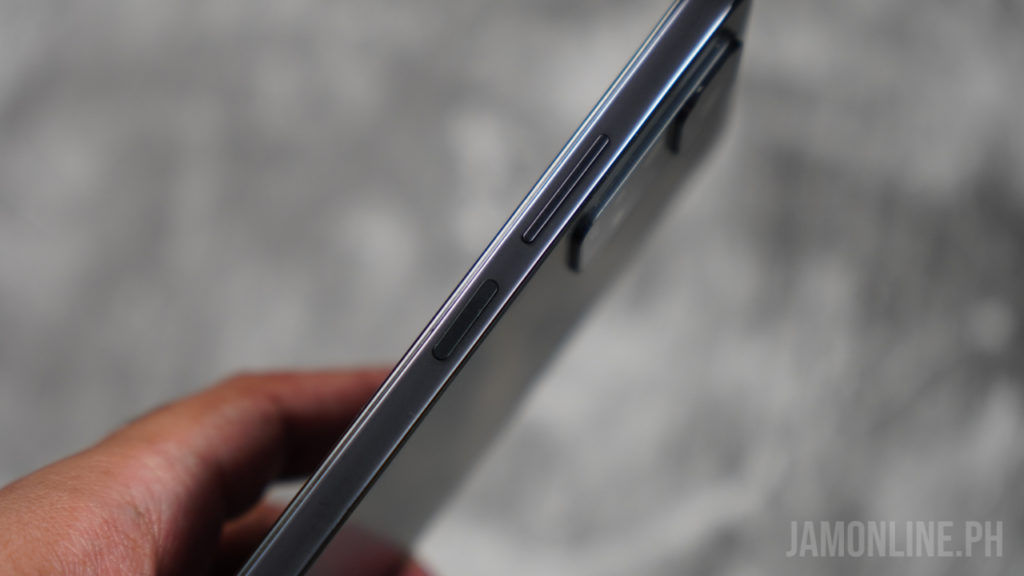
Just like the Pro model, Xiaomi also placed the 3.5mm audio jack, speaker, IR blaster, and microphone on the top of the Redmi Note 11S. Its left cheek accommodates the card tray, while its right side comes with the volume rockers and a power/lock key. The latter also doubles as a fingerprint scanner.
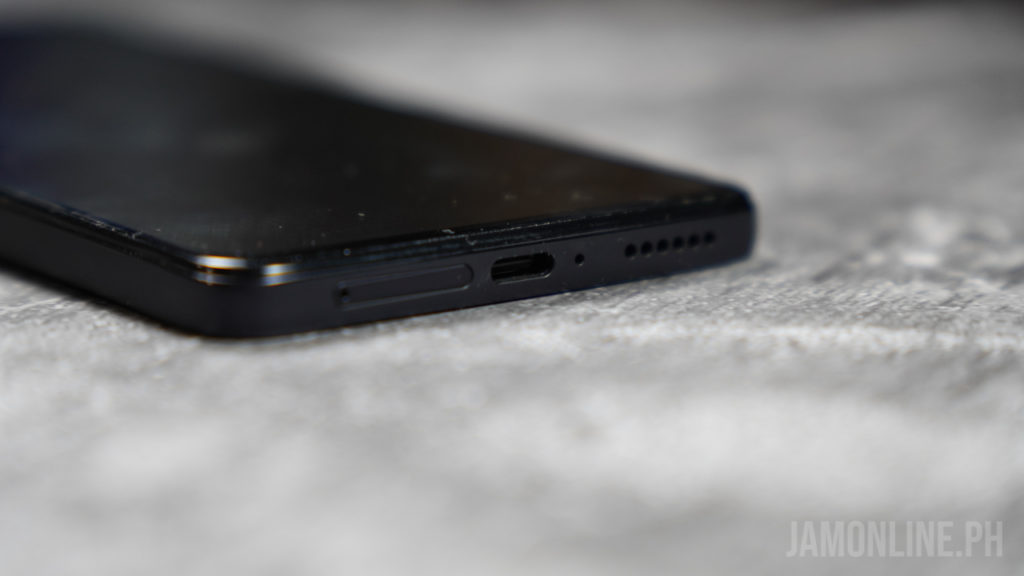
At the bottom, the main speaker, USB-C port, and microphone are placed.
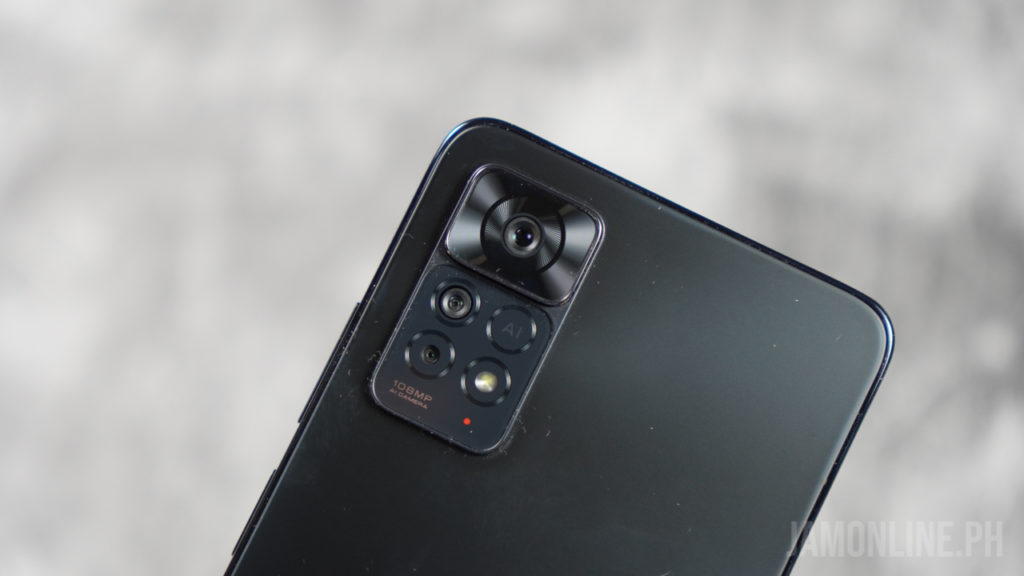
Flip the device to see its back, revealing its protruding rear cameras. Honestly, the camera module is so bulky, making us uncomfortable to put the device in our pocket or even place it on the table.
Redmi Note 11S Review: Display
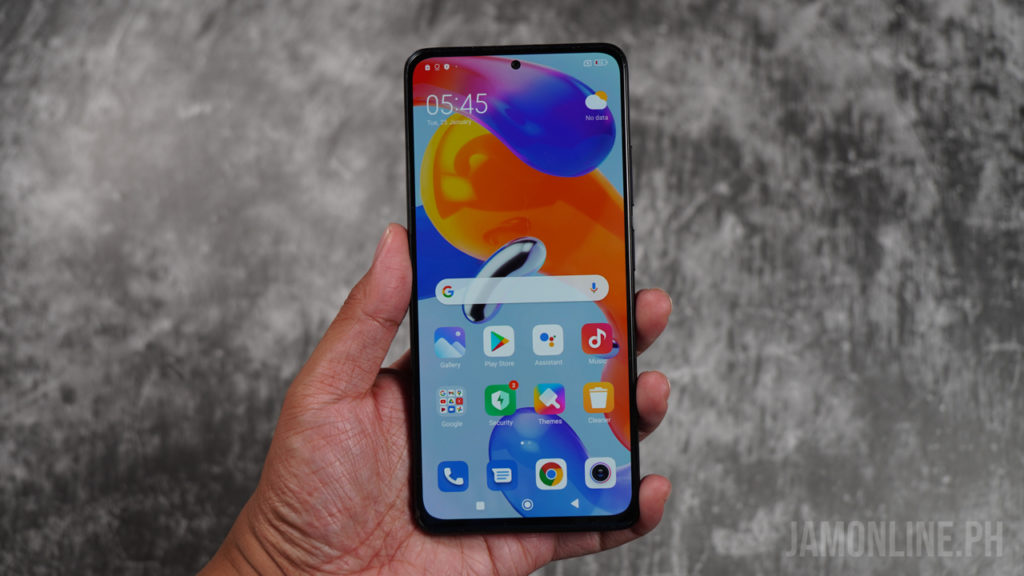
The Redmi Note 11S sports a 6.43-inch AMOLED panel with FHD+ DotDisplay. It also comes with Corning Gorilla Glass 3 to protect its 90Hz screen.
What we like the most about its display is it provides users with deep black, making it a suitable device for people who prefer dark mode. The display also flashes a lot of details, while it also has punchy colors.
In addition, it can support up to a 90Hz refresh rate, enabling the device to handle heavy graphics. But, if you want to save battery, users can choose only up to 60Hz, which is more than enough for users who don’t play games.
Redmi Note 11S Review: Battery Life
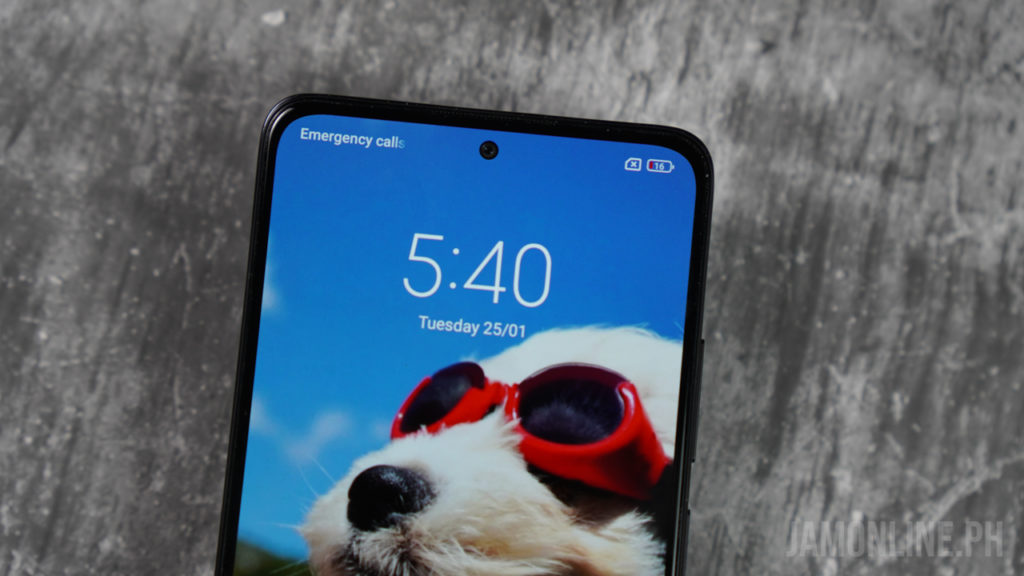
Speaking of saving battery, the Redmi Note 11S features a 5,000mAh juice with 33W Pro Fast Charging. We ran it on the PCMark Work 3.0 battery life test, and it got 17 hours and 33 minutes.
We used the phone with its 90Hz refresh rate on, and unexpectedly, it could run for as long as 11 hours and 13 minutes. Our daily mobile tasks include basic communications, active social media browsing, and casual gaming.
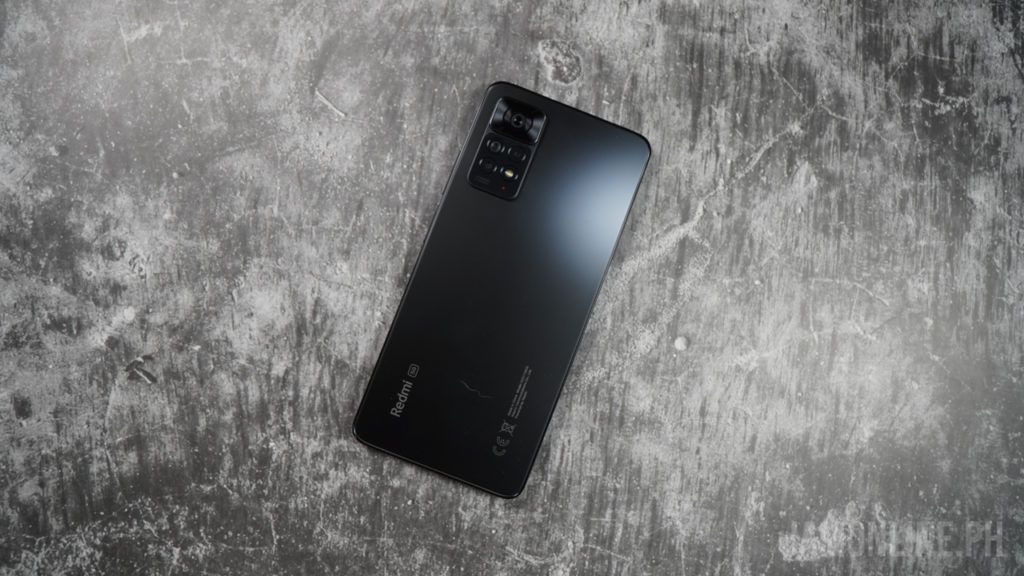
Meanwhile, when we heavily used it on weekends, the Redmi Note 11S only ran up to 7 hours and 49 minutes. It’s still impressive, though. We also have to note that we used it with WiFi connections 24/7, brightness at 50% level, and volume level at almost 100%.
Apart from browsing our social media accounts, we also played games with heavy graphics for at least an hour or two. Then, we streamed several Netflix movies.
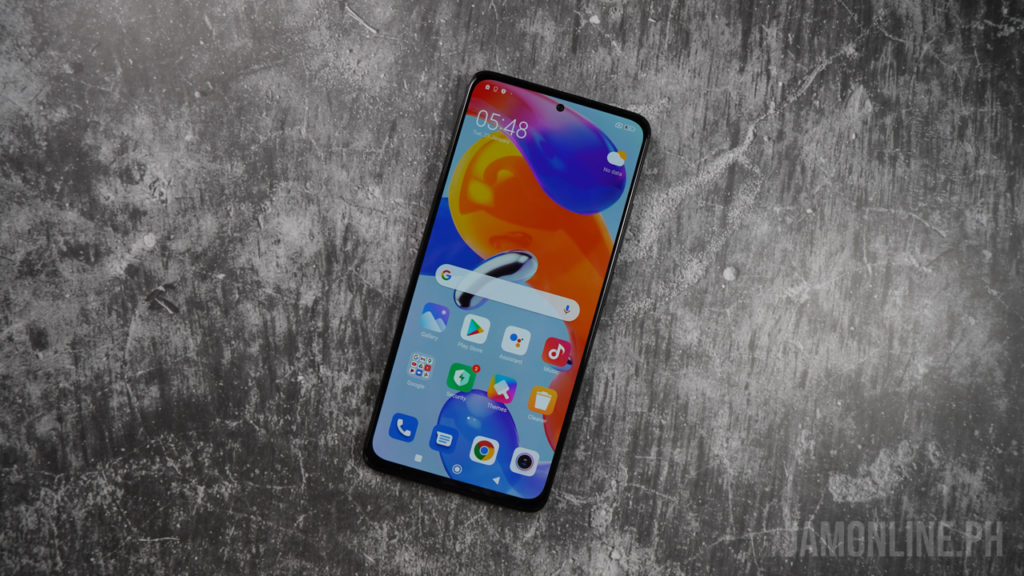
These heavy mobile activities took us almost six hours to reach 20% battery capacity.
Charging the device from 20% to the full would take over an hour.
Redmi Note 11S Review: Software and Performance
Xiaomi loaded the Redmi Note 11S with MIUI 13 based on Android 11. On the other hand, powering up the device is a 12nm MediaTek Helio G96 processor, 8GB + 3GB RAM expansion using its storage, and a 128GB internal storage.
It comes with several pre-installed apps, including some of our most-used apps, like Facebook, Spotify, and TikTok. With this, we no longer have to download them. Meanwhile, you can quickly delete these apps if you don’t need them.
Meanwhile, here are its benchmark scores to give you a preview of what it could deliver:
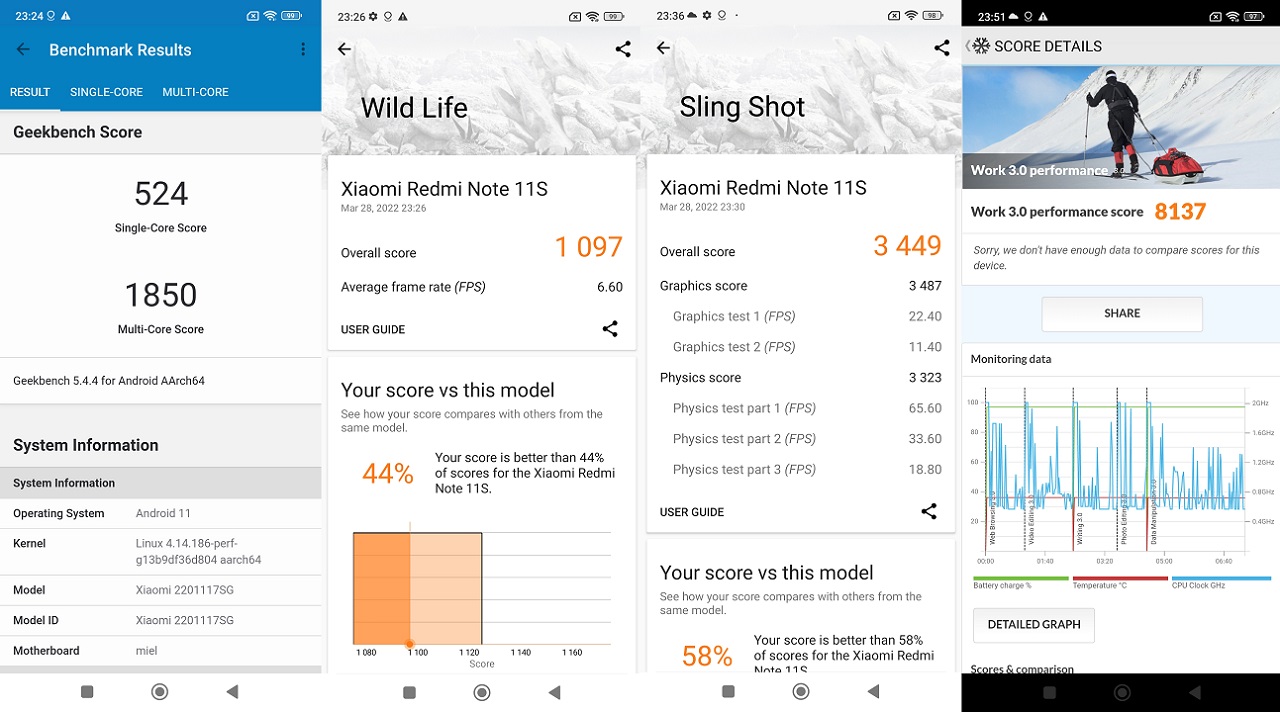
In terms of multitasking, the device never let us down. We didn’t see any potential issues when running multiple apps at once. It also ran smoothly when we were switching from one app to another.
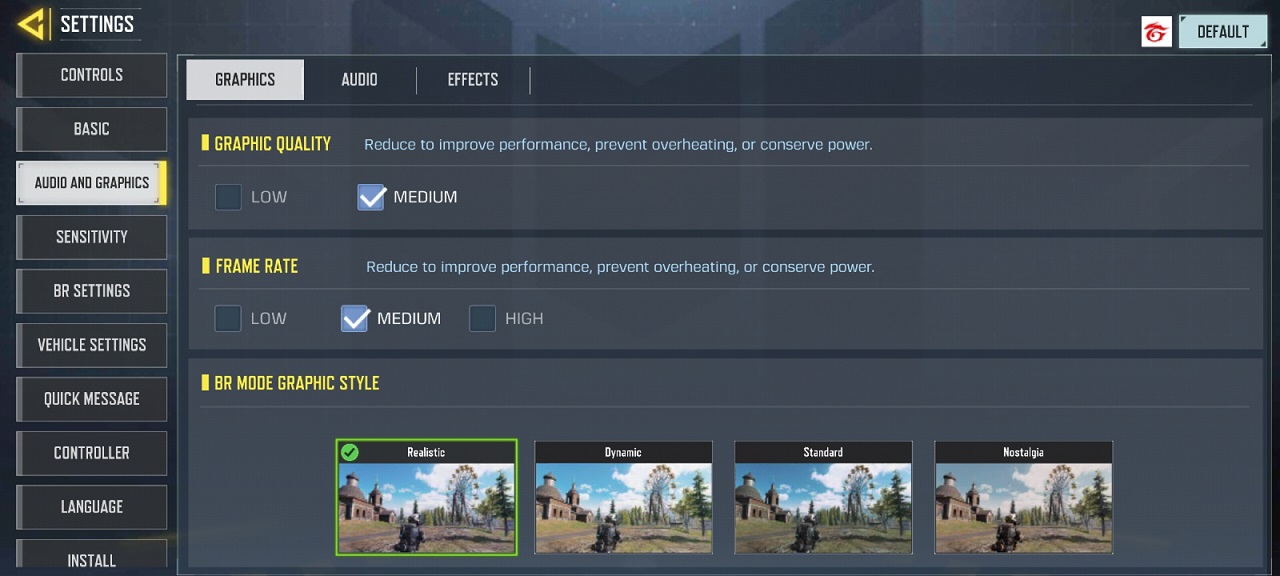
While it can handle games with heavy demands, we must note that the device turns hot when playing for a long time at a 90Hz refresh rate. It’s manageable, though. In addition, we like lowering down our settings when continuously playing games to avoid overheating and conserve power.
Redmi Note 11S Review: Camera
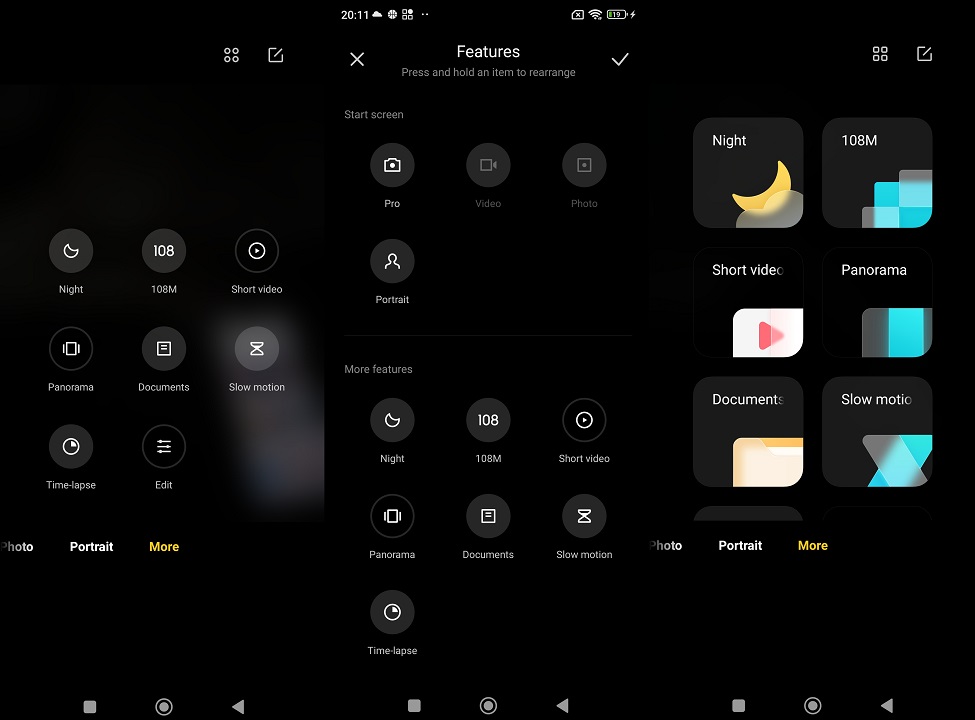
Looks competitive on paper, the Redmi Note 11S sports a quad-rear camera, consisting of a 108MP primary shooter, 8MP ultra-wide lens, 2MP macro lens, and a 2MP depth sensor. For selfies, it has a 16MP snapper.
Just like the Pro variant, the Note 11S banks on its photography department to entice consumers and beat other devices at its price point.
The device can shoot great photos and videos, recording up to 1080p at 30fps. In addition, it can capture accurate colors and details. In fact, you would even have a hard time determining which photo was taken by the Redmi Note 11S and its Pro counterpart. So while we’re a bit disappointed by the Redmi Note 11 Pro 5G camera performance because we felt like it overpromised what it could offer, we’re just fine with the quality of photos and videos we got from the Note 11S.
However, it’s fair to say that we’re not a fan of its Zoom feature, as photos have too many visible noises.
The only downside of the Redmi Note 11S is its Pro mode when taking selfies. While you can adjust its bokeh level, we still found it overwhelming. Some blurring would also overlap with some of the parts of the subject. Selfies were pale, too.
Nevertheless, all photos and videos are already great to post directly on social media platforms.
Redmi Note 11S Review: Verdict
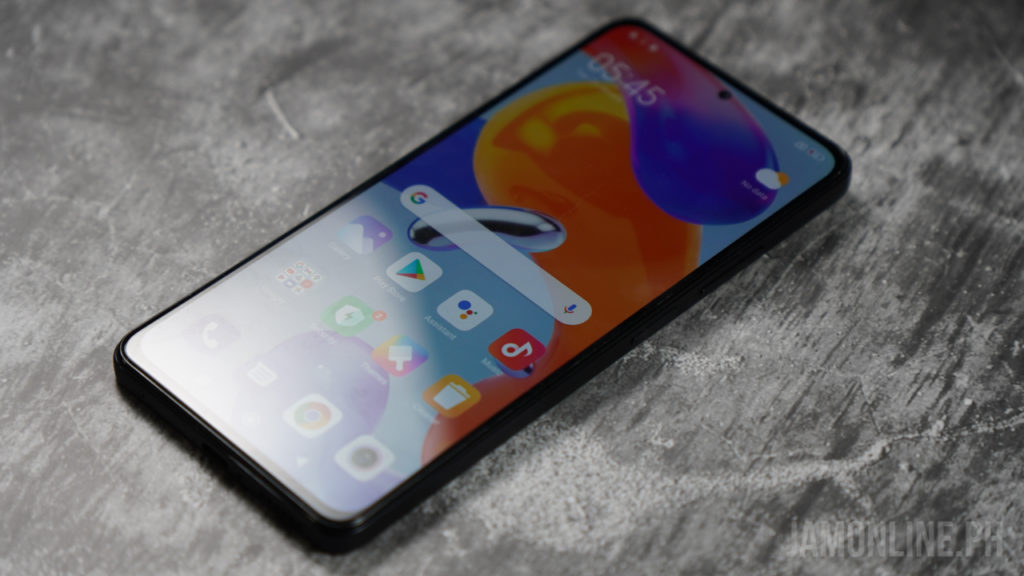
Overall, the Redmi Note 11S is a good upgrade if you’re coming from previous Redmi models. It could perform and deliver demands, but consumers must remember that we’re judging it based on its price point.

Priced at only Php12,999, you’d get a device that has a 90Hz AMOLED screen, long battery life, decent camera, and a capable phone that can handle heavy demands.
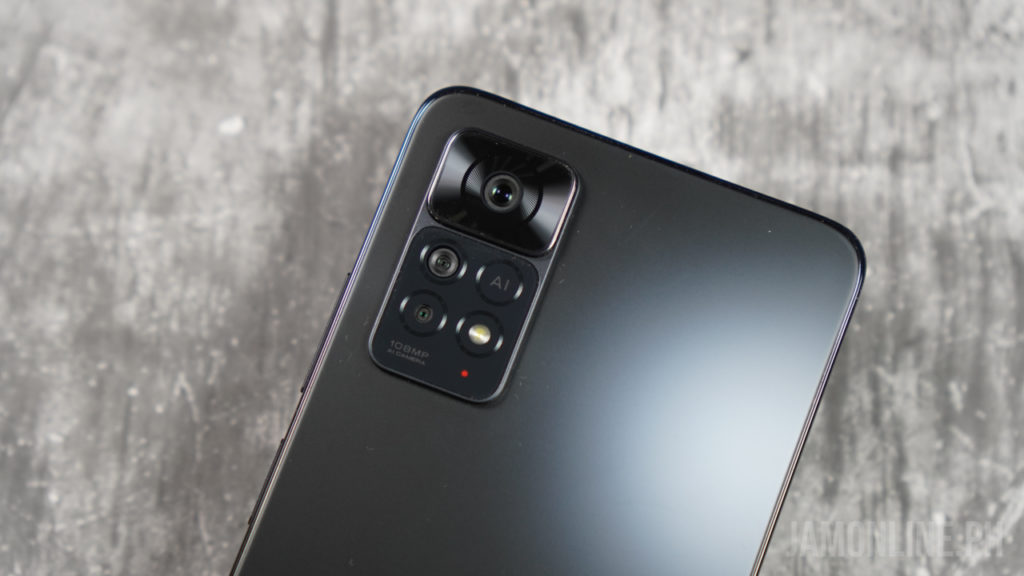
Of course, we’ve seen better phones with a much more expensive price tag, but if you’re not much of a gamer and a picky camera enthusiast, then the Redmi Note 11S is worth considering.
So, was it a yay or nay? Let us know what you think in the comment section!

